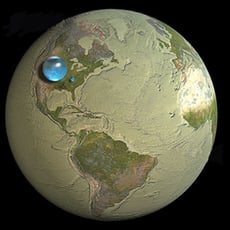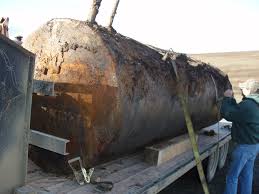The EPA's Office of Underground Storage Tanks (OUST) reports the number of cases of Leaking Underground Storage Tanks remaining unresolved exceeds 70,000 across the U.S. The EPA data also indicates the average cost of cleanup as US$130,000. As with any data, it's important to look at the distribution of data, not just averages. A vivid (maybe too vivid) example of this “flaw of statistics” is the fact that the average age of diaper wearer is somewhere near middle age, let’s say 45 years old. Drilling down into the data available from individual state UST cleanup funds, we find many examples of cleanup costs exceeding US$1.0M, sometimes with no end in sight. We can reasonably infer from the OUST data that the less complex sites have been resolved at a lower cost of cleanup, leaving the more complex sites yet to be addressed. This begs the question – WHY?
We have observed at dozens of sites in the eastern U.S. many cases where years of pumping from recovery wells with long screen intervals produced a lot of water, but without much residual product and cost a lot of money. The challenge of effective cleanup of tank sites has been studied and addressed by several countries and agencies around the globe. Here in the U.S. several guidance documents including the ITRC LNAPL guidance on Evaluating LNAPL Remedial Technologies for Achieving Project Goals for Achieving Project Goals point to the challenge of effective cleanup without adequate site characterization.
Enter the role of high-resolution site characterization for the cleanup of leaking underground storage tank sites and the reasons this approach is so valuable to achieving performance goals.
High-Resolution Reason #1 – The data collected is scale-appropriate. The term "high-resolution" does not point to a specific technology or magic bullet for characterization or cleanup. What it does lead to is collecting adequate data at a scale appropriate to the required lines of evidence needed to support effective remedial design and performance monitoring. High-resolution characterization is best accomplished with a combination of technologies and techniques.
High-Resolution Reason #2 – Uncertainty and therefore risk and cost associated with residual LNAPL mass are reduced. Data collection of an insufficient scale and density leads to an incomplete assessment. Pockets of petroleum product are frequently missed and remain on sites providing a slow, but continuous source of mass into groundwater resulting in elevated concentrations of risk parameters such at BTEX, naphthalene, and MTBE. Soil heterogeneity creates localized pockets of LNAPL mass storage and mass available for transport.
High-Resolution Reason #3 – The complete profile of the soil permeability is revealed. The soil structure associated with all sites, including underground storage tank sites, is sufficiently heterogeneous enough to produce localized zones of permeability and non-permeability. These different zones of permeability have a profound impact on any remedial design involving fluid hydraulics. This includes where and what type of samples are possible and representative, the placement of monitoring well screen intervals, the design intervals for in-situ injections, and the placement of recovery systems.
High-Resolution Reason #4 – Remediation costs will be lower. Better site characterization leads to better LNAPL conceptual site models (LCSM) and more efficient and faster site cleanup. With more accurate knowledge of LNAPL mass and soil behavior characteristics remediation activities and infrastructure can be more effectively targeted and proper performance parameters established.
High-Resolution Reason #5 – Perhaps what you have been doing is not working. For any remediation practitioner, this is the kiss of death. How long is your client or funding source going to keep approving another round of monitoring well installations, extraction events, or injections without adequate performance results?
High-Resolution Reason #6 – It's more sustainable. Groundwater represents 30% of the earth's freshwater supply, but often times 100% of the water supply for rural residents. Better data lead to better cleanups faster. The less groundwater impacted by contaminants, the less energy and materials used in the cleanup process all provide a more sustainable solution.
Follow this blog as we walk through the elements of high-resolution site characterization, what works, what doesn’t work, and learn how to achieve better results earlier and at lower cost on your leaking underground storage tank site.
Other Blog Posts that may be of interest:
5 Steps to Developing Weighted Lines of Evidence During Site Characterization
Revised Characterization Plan Accelerates Petroleum Brownfields Cleanup and Redevelopment
High Resolution Site Characterization Tools




